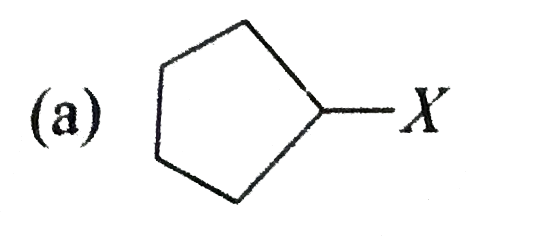Sodium teritary butoxide forms ether only with:

CH3−X
H3C−CH∣CH−CH3
H3C−X∣CH∣CH3−CH3
The correct Answer is:B
Step by step video, text & image solution for Sodium teritary butoxide forms ether only with: by Chemistry experts to help you in doubts & scoring excellent marks in Class 12 exams.
Topper's Solved these Questions
- BOOK - GRB PUBLICATIONCHAPTER - ALCOHOLS AND ETHERSEXERCISE - EXERCISE 421videos
ALCOHOLS AND ETHERS
- BOOK - GRB PUBLICATIONCHAPTER - ALCOHOLS AND ETHERSEXERCISE - EXERCISE 431videos
ALCOHOLS AND ETHERS
- BOOK - GRB PUBLICATIONCHAPTER - ALCOHOLS AND ETHERSEXERCISE - EXERCISE 401videos
ALCOHOLS AND ETHERS
- BOOK - GRB PUBLICATIONCHAPTER - ALCOHOL, ETHER AND EPOXYEXERCISE - STRAIGHT OBJECTIVE TYPE22videos
ALCOHOL, ETHER AND EPOXY
- BOOK - GRB PUBLICATIONCHAPTER - BIOMOLECULES, POLYMERS, PRACTICAL ORGANIC CHEMISTRY AND CHEMISTRY IN DAILY LIFEEXERCISE - SUBJECTIVE TYPE40videos
BIOMOLECULES, POLYMERS, PRACTICAL ORGANIC CHEMISTRY AND CHEMISTRY IN DAILY LIFE
Similar Questions
How many of the given reaction will form tert-Butyl ethyl ether?
I) tert - Butanol + Ethanol H+−−→
(II) tert-Butyl bromide + Sodium ethoxide →
(III) Sodium tot-butoxide + Ethyl bromide →
(iv) Isobutene + Ethanol H+−−→View SolutionFormation of methyl tertiary butyl ether by the reaction of sodium tertiary butoxide and methyl bromide involves.
View Solution
Knowledge Check
- Question 1 - Select One
STATEMENT-1 Reaction between sodium tert butoxide and ethyllodide does not produce ether
and
STATEMENT-2 : Sodium tert butoxide is very strong base but it is not a nucleophileASTATEMENT-1 is True, Statement-2 is True, Statement-2 is a correct explanation for Statement-1BSTATEMENT-1 is True, Statement-2 is True, Statement-2 is NOT a correct explanation for Statement-1CStatement-1 True, Statement-2 is FalseDStatement-1 False, Statement-2 is True, - Question 2 - Select One
Formation of methyl tertiary butyl ether by the reaction of sodium tertiary butoxide and methyl bromide involves.
Aelimination reactionBelectrophilic addition reactionCnuclephilic addition reactionDmuclephilic substitution reaction - Question 3 - Select One
Formation of methyl tertiary butyl ether by the reaction of sodium tertiary butoxide and methyl bromide involves
Aelimination reactionBelectrophilic addition reactionCnucleophilic addition reactionDnucleophilic substitution reaction.
Assertion (A): Reaction between (Me3CONa) (sodium ter-butoxide) and ethyliode (C2H5I) does not produce an ether.
Reason (R): Sodium ter-butoxide is a very strong base but is not a nucleophile.View SolutionSodium t-butoxide on treatment with ethyl bromide gives :
View SolutionAcetone reacrts with butan-2-ol in prsence of aluminium tertiary butoxide to form :
View Solution(A) Di-tert-butyl ether cannot be prepared by Williamson's ether synethesis.
(R ) tert-Butyl bromide on treatment with sodium tert-butoxide preferentially undergoes elimination to form isobutylene and tert-butyl alcoholView SolutionEthyl iodide reacts with sodium methoxide to form ethyl ether. It is example of
View Solution

